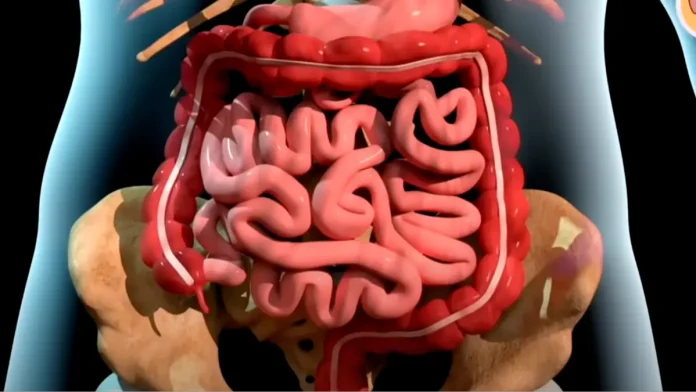The reality of cancer in the modern era remains sobering. The National Institutes of Health (NIH) estimates that in 2025 alone, around 2 million Americans will receive a cancer diagnosis. While advanced medicine has dramatically improved survival rates, certain forms of cancer remain profoundly lethal. Statistics show that breast, lung, prostate, and colorectal cancers make up nearly half of all new cases in the U.S., while lung, colorectal, pancreatic, and breast cancers account for almost 50% of cancer-related deaths.
It is a common misconception that the tumor itself is the singular cause of death. As Dr. Paulien Moyaert explains, it is often not the cancer cells alone that directly kill the patient, but the cascading complications and systemic failures the tumor triggers within the body.
Dr. Moyaert’s striking 3D simulation, viewed millions of times, breaks down these complex biological events, illustrating precisely how cancer develops, spreads, and eventually prevents vital organs from functioning, leading to a breakdown of the body’s essential life support systems.
I. The Primary Mechanism of Lethality: Metastasis
The four-minute video correctly begins by focusing on metastatic cancer—the stage that accounts for the vast majority of cancer-related deaths. Metastasis is the process by which malignant cells break free from the primary tumor and colonize distant organs, disrupting their function.
The Spread and Colonization
Metastasis transforms cancer from a localized disease into a systemic crisis.
- Detachment and Invasion: A single cancer cell develops the biological capability to detach from the primary tumor mass. It produces specialized enzymes that allow it to invade surrounding tissue and penetrate the walls of nearby blood vessels or lymphatic vessels.
- Circulation: The detached cell (or small cluster of cells) travels through the body’s circulatory system, often protected by the blood environment.
- Establishment: The cell eventually lodges in a distant organ—such as the liver, lungs, or brain—and begins to divide uncontrollably, establishing a new tumor colony.
The secondary tumor colonies are what ultimately lead to death by preventing essential, life-sustaining organs from performing their critical functions.
II. Organ Failure: The Fatal Domino Effect
Metastatic colonization leads to organ failure through physical obstruction, functional compromise, and systemic toxicity. Dr. Moyaert’s simulation highlighted several particularly devastating organ-specific failures.
The Failure of the Digestive System
When cancer grows in the digestive system (the esophagus, stomach, or colon), it compromises the entire metabolic engine of the body.
- Obstruction and Malnutrition: Large tumors can physically block the passage of food and waste. This prevents the body from absorbing essential nutrients (leading to severe malnutrition and wasting) and prevents waste products from passing (leading to toxic buildup and intense pain).
- Perforation: Tumor growth can erode the intestinal wall, leading to a perforation (a hole in the intestine). This is a life-threatening emergency where digestive contents spill into the sterile abdominal cavity, causing sepsis—a massive systemic infection that can be fatal without immediate surgery.
The Self-Destruction of Pancreatic Cancer
Pancreatic cancer is notoriously aggressive and devastating because of the pancreas’s dual role in digestion and hormone regulation.
- Enzyme Auto-Digestion: When tumors block the pancreatic ducts—the pathways that carry digestive enzymes into the small intestine—the enzymes are trapped inside the pancreas. These enzymes are designed to break down food, but when trapped, the pancreas literally begins to “digest itself” (autodigestion). This process is extremely painful, causes severe inflammation, and profoundly degrades the body’s ability to manage blood sugar and absorb nutrients, making this form of cancer highly lethal.
Lung Cancer and Asphyxiation
The lungs are a common site for primary cancer (like in smokers) and metastatic cancer (from breast or colorectal cancer).
- Restricted Oxygen Supply: Tumors growing in the lung tissue or around the airways physically restrict oxygen supply to the rest of the body. This process leads to gradual asphyxiation. As the disease progresses, the patient’s breathing becomes shallow, inefficient, and eventually unable to sustain life due to multi-system failure caused by hypoxia (lack of oxygen).
III. Systemic Collapse: Cachexia and Bone Marrow Suppression
Beyond immediate organ obstruction, cancer causes systemic collapse by inducing chronic wasting and destroying the body’s fundamental defenses and metabolic stability.
Cachexia: The Severe Wasting Syndrome
Cachexia is a severe syndrome of muscle wasting and body weight loss that affects nearly half of all cancer patients, especially those in advanced stages.
- Metabolic Reprogramming: Cancer cells are greedy. They hijack the body’s metabolism, causing the liver to produce signaling molecules (cytokines) that force the body to break down fat and muscle mass faster than it can be replaced. The body is essentially starved by the tumor’s uncontrolled energy demands.
- Loss of Function: This muscle wasting is devastating because it leads to weakness, fatigue, and the eventual inability to breathe (as the respiratory muscles waste away). Cachexia is often listed as a primary contributing factor to death, as the body simply loses the physical strength required to sustain life.
Bone Marrow Suppression and Infection
Infections are identified as another major, common cause of death in cancer patients. This vulnerability is directly linked to the assault on the bone marrow—the factory for blood components.
- Immune System Weakening: The cancer itself weakens the body’s general immune system. However, chemotherapy intensifies this vulnerability by suppressing the bone marrow—the body’s main source of white blood cells (the immune system’s soldiers).
- The Blood Cell Deficit: Both chemotherapy and cancer infiltration (myeloma, leukemia, or solid tumor metastasis) into the bone marrow disrupt its ability to produce three essential blood cells:
- Anemia: Loss of red blood cells, leading to severe fatigue and organ damage due to lack of oxygen delivery.
- Neutropenia/Leukopenia: Loss of infection-fighting white blood cells, making the body susceptible to overwhelming, uncontrollable infections (sepsis) from normally harmless bacteria.
- Thrombocytopenia: Dangerously low platelet counts, which prevent normal blood clotting and can lead to fatal, uncontrollable internal bleeding (hemorrhage).
IV. The Role of Modern Medicine: Pain Management and Quality of Life
Despite the stark reality of the physiological progression, the conclusion of Dr. Moyaert’s widely viewed video (6.6 million views) offers an essential message of hope and patient dignity.
Ensuring Comfort and Dignity
The most critical message is that modern medicine offers extremely effective pain management options. While cancer progression is often relentless, suffering is not inevitable.
- Pharmaceutical Interventions: Treatments such as morphine and opium-based pain treatments are highly effective at controlling chronic pain associated with tumor pressure, inflammation, and organ compromise. Palliative care teams specialize in managing symptoms to ensure comfort and dignity during the final stages of the disease.
- Patient Mandate: The video’s clear emphasis is that no patient should have to endure unnecessary physical suffering due to cancer. The priority shifts from cure to comfort and maintaining the highest possible quality of life until the end.
V. Conclusion: The Power of Knowledge and Early Detection
Chris Kirt’s terrifying mistake was almost ignoring the one symptom that could have been dismissed as minor but proved to be major. His ultimate survival was defined by his intuitive self-advocacy.
The striking simulation provided by Dr. Moyaert offers an invaluable, stark education into the complexities of the disease. Cancer’s lethality is a result of a sophisticated, multi-system breakdown induced by metastasis and subsequent organ and immune failure. Understanding these mechanisms—from the self-digestion of pancreatic cancer to the asphyxiation caused by lung tumors—is vital not for fear, but for empowerment. This knowledge reinforces the critical importance of early detection, rigorous monitoring, and trusting one’s instincts at the very first sign of subtle change.

